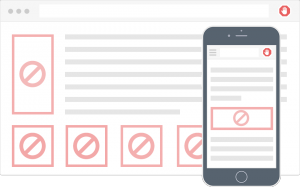Research Reveals The Cost of Mobile Ads on News Sites
- Monday, October 5th, 2015
- Share this article:
 Ad blocking is a hugely contentious issue in the world of digital marketing right now, but very little work has been put into examining why users are electing to download ad blocking software beyond a general assumption that consumers dislike advertising.
Ad blocking is a hugely contentious issue in the world of digital marketing right now, but very little work has been put into examining why users are electing to download ad blocking software beyond a general assumption that consumers dislike advertising.
A new study by the New York Times has examined how mobile advertising affects the load times of the top 50 online news entities, and has found a huge disparity among different publishers, with advertising adding up to 30 seconds to the time it takes to view a story.
The list was evenly split when it came to advertising vs editorial load times, with advertising content consuming the majority of the data on 26 websites. The worst offender was Boston.com, where large video ads made up 15.4mb of data on the homepage, compared to just 4.0mb of editorial content.
Other sites where ads content weighed heavily included The Independent, the Chicago Tribune and The Daily Beast. While the New York Post was one of the slowest websites to load over 4G, the majority of this was actually due to large editorial photos, so ad blockers had little effect on loading times.
At the other end of the sale, sites like The Guardian, Yahoo!, NPR and The Washington Post all had data-light websites with adverts making little or no impact to load times. USA Today boasted the smallest mobile website overall, with just 0.4mb of ad content and 1.0mb of editorial on the homepage.
Removing ads from the equation doesnt just time, but also money, with an average American mobile plan charging around a penny for each megabyte of data. Visiting the homepage of Boston.com once a day for a month would cost around $9.50 (£6.26) in data usage purely for the ad content.
With an ad blocker employed, the number of files accessed during a visit to Boston.com dropped from 389 to 52, and the load time decreased from 33 seconds to seven. Even on a more typical website like the Los Angeles Times, an ad blocker dropped load times by three quarters and cut the number of files from 178 to 20.
Figures like this give us some valuable insight into why consumers choose to employ ad blockers. The mobile experience is all about speed and convenience, and when ads weigh so heavily on users time and money, its no surprise they are seeking out solutions to avoid advertising.















